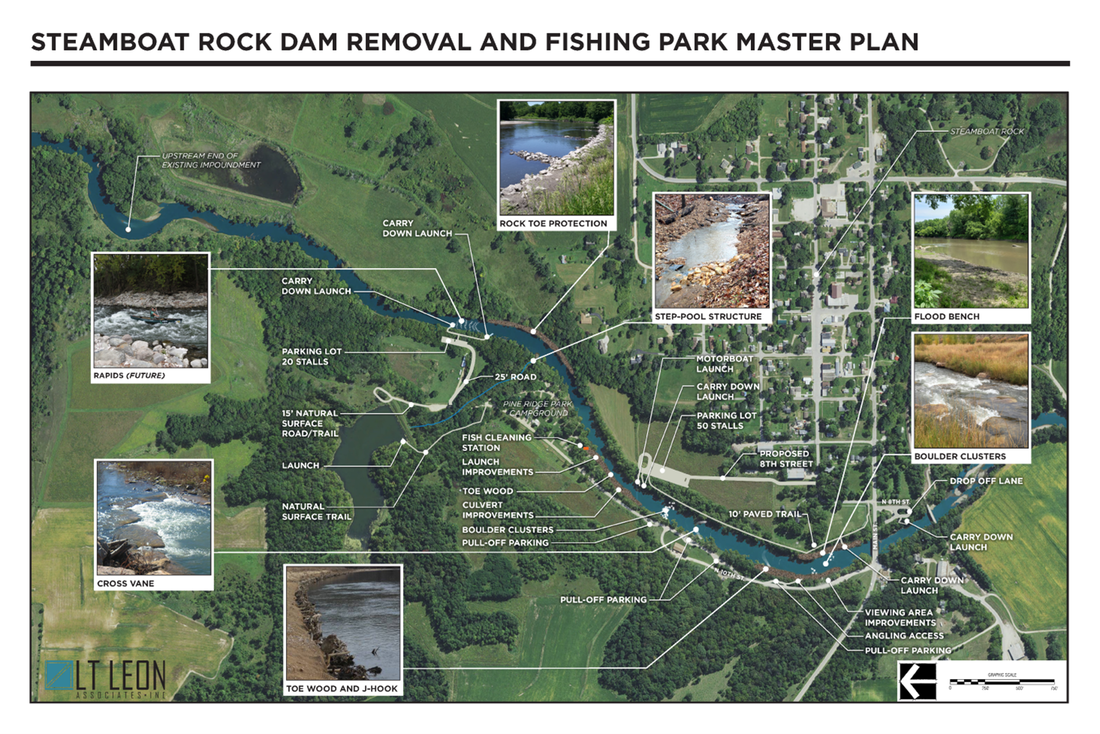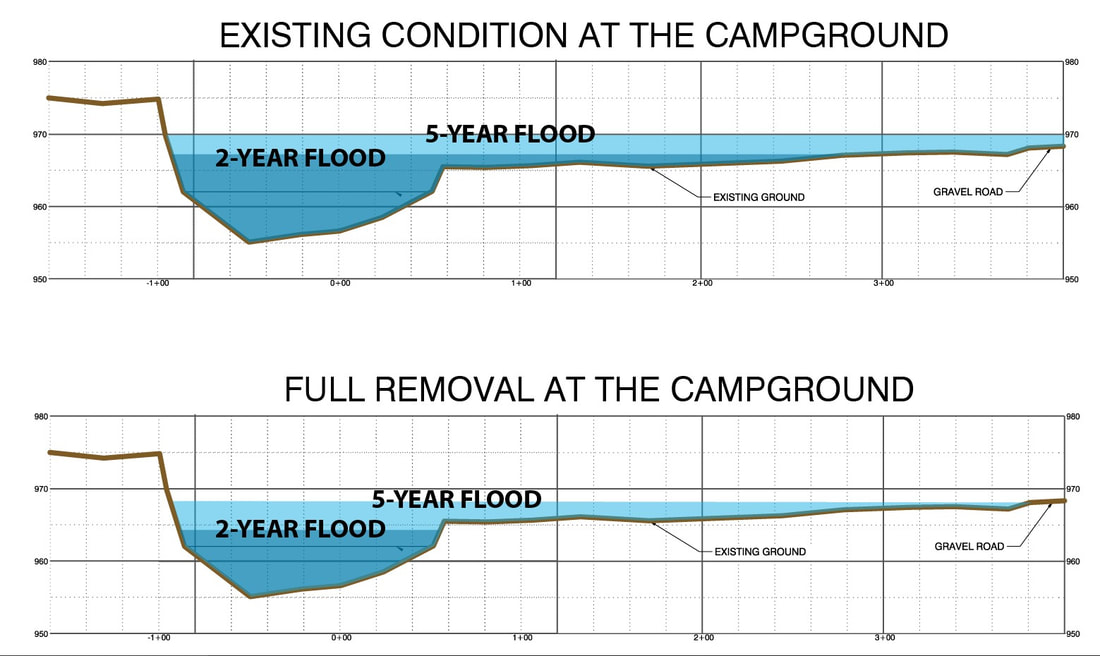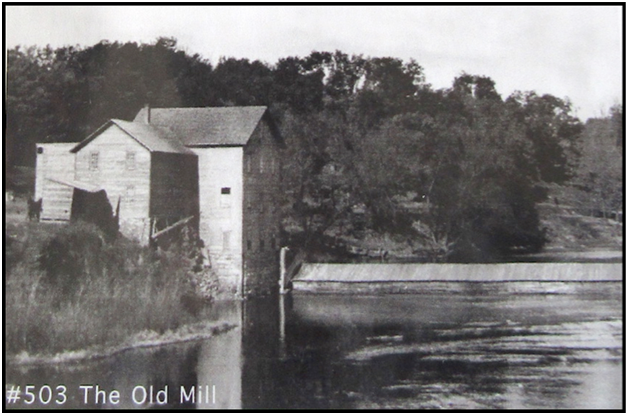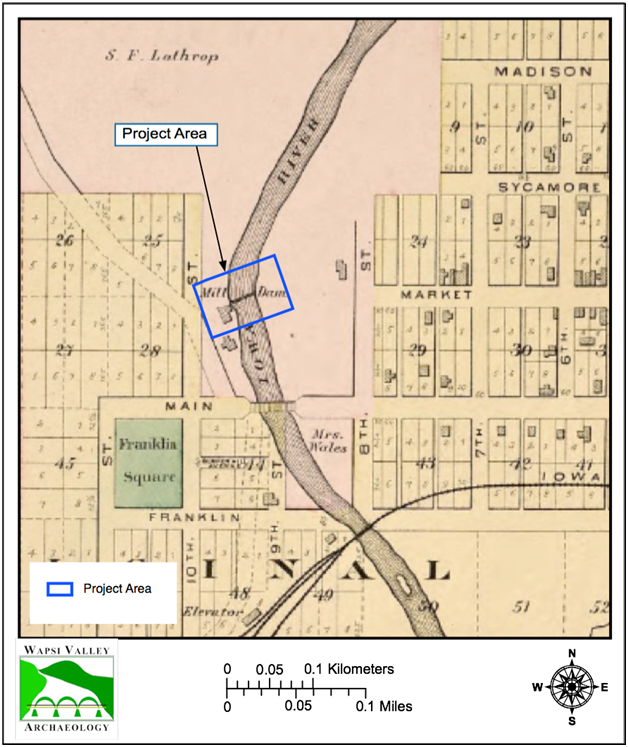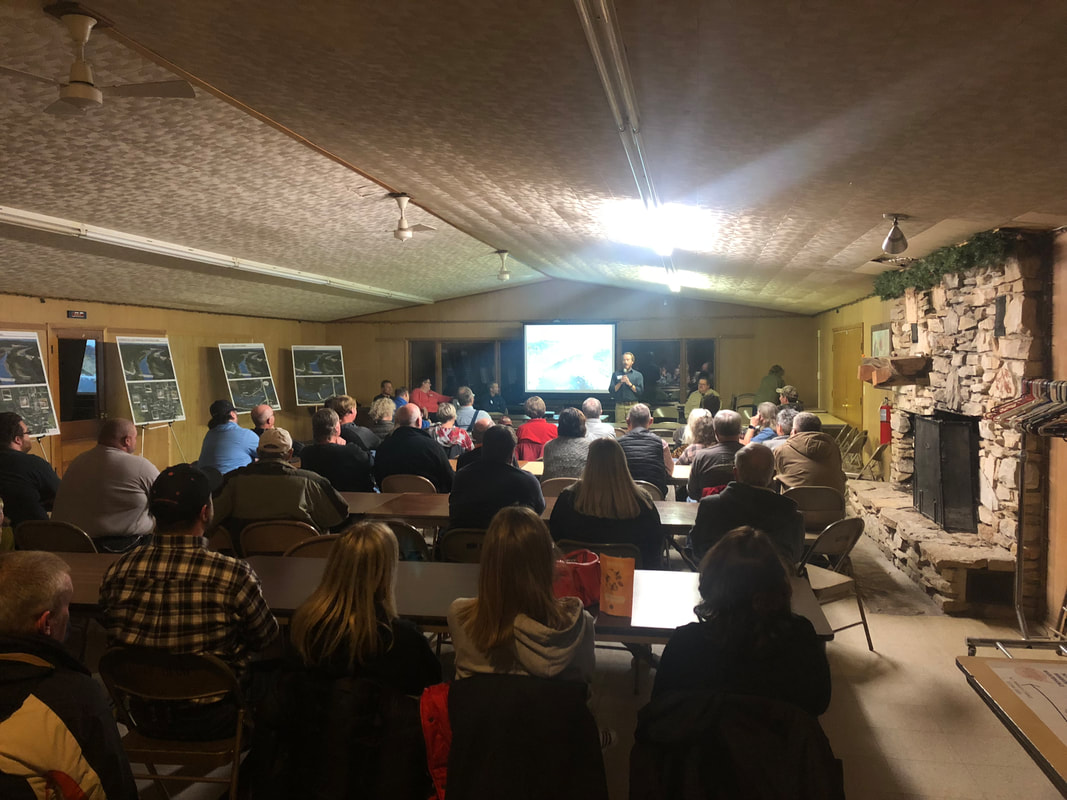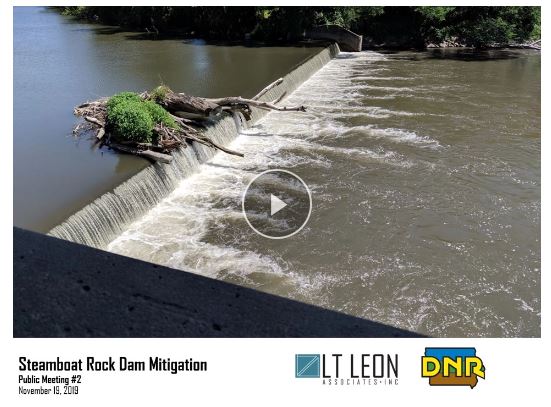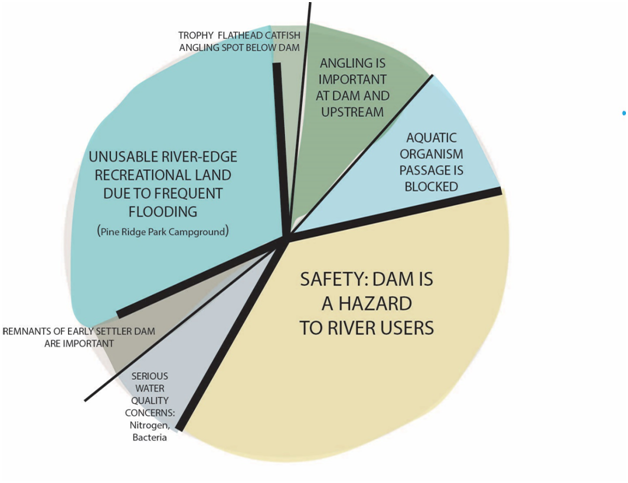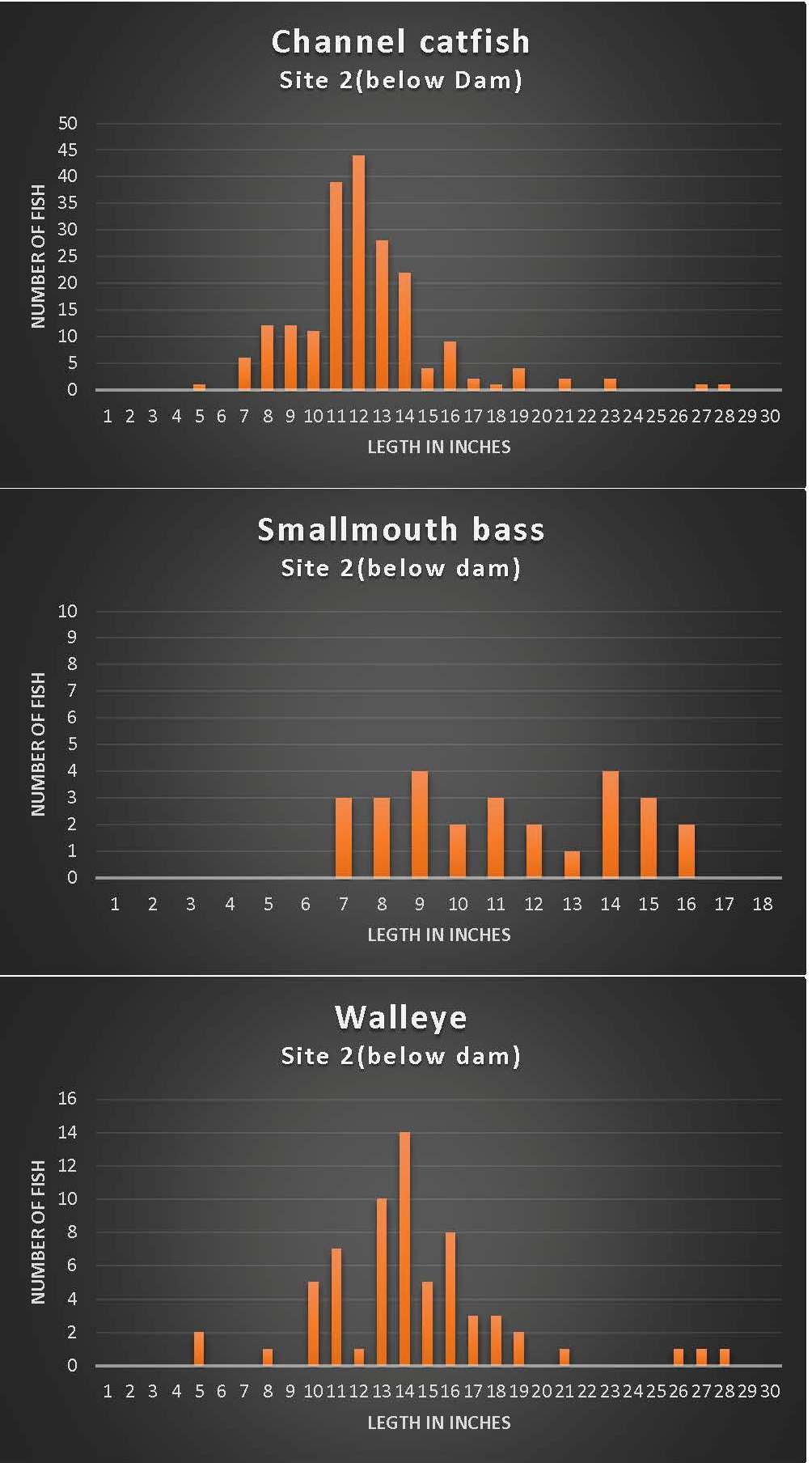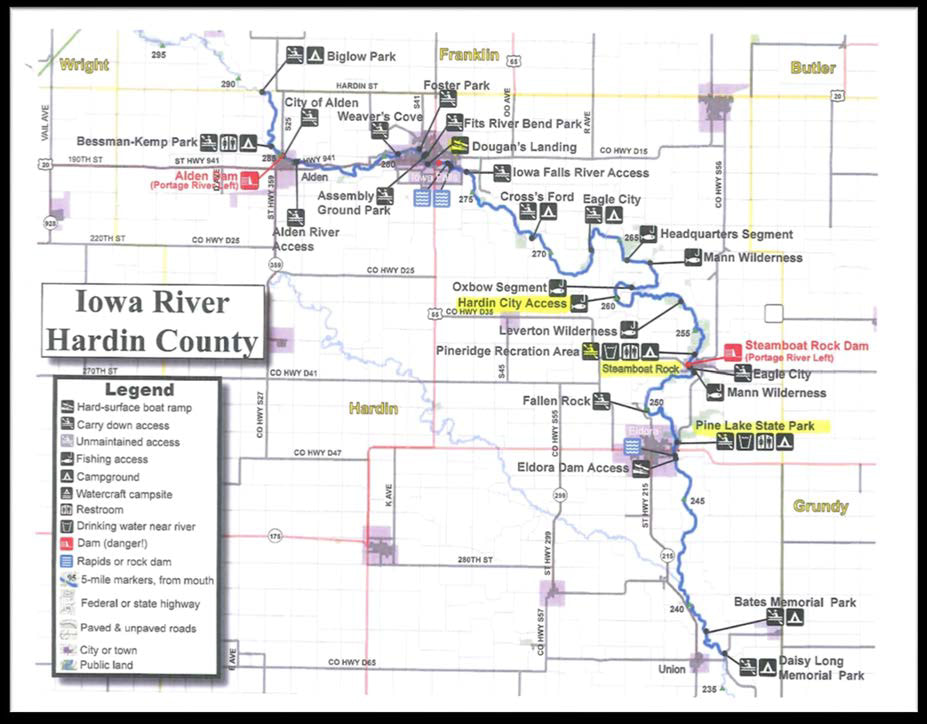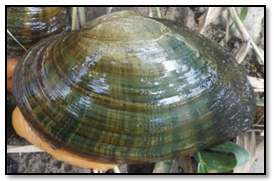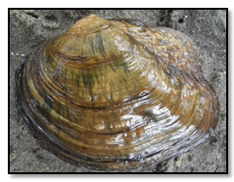|
STEAMBOAT ROCK - The Iowa Department of Natural Resources (DNR), Hardin County Conservation, the City of Steamboat Rock, and the U.S. Fish and Wildlife Service will host a public meeting at 6:30 p.m., July 13, at the Iowa River Conservation Club Building near Pine Ridge Park.
Restoration activities planned for the Steamboat Rock Dam and Iowa River throughout the town, including public areas owned by the city, county and state will be presented at the meeting. “After several years of public input, planning and design, a series of new projects will unfold over a few years to provide a safer, healthier river in the area,” said Nate Hoogeveen, project manager for the Iowa Department of Natural Resources. Projects include removing the dam, replacing flathead catfish habitat, improving fishing access, adding small rapids for fishing and tubing, and eventually a new boat ramp, a new lodge, camping amenities, boating access, and parking. “This $3 million plus commitment among federal, state, and local governments is the biggest recreation investment at Steamboat Rock in decades," Hoogeveen said. “It will reinvent local access to the river while enhancing popular activities like fishing, inner tubing, paddling and camping.” The Steamboat Rock Dam will be removed in stages to prevent too much sediment from being flushed downstream while stabilizing river banks upstream. As the dam is removed and banks are stabilized upstream, the project will transform the area into a friendly zone for recreation and habitat for aquatic life such as freshwater mussels and fish. “We are grateful to the U.S. Fish and Wildlife Service under its Fish Passage program to provide $1 million toward the in-channel project,” said Hoogeveen, “along with the Harding County supervisors in investing large amounts toward park improvements.” Any person with special requirements such as those related to mobility or hearing impairments who wishes to participate in the public meeting should promptly contact the DNR or ADA Coordinator at 515-725-8200, Relay Iowa TTY Service 800-735-7942, or [email protected] to advise of specific needs. For more information, contact Wes Wiesse, Hardin County Conservation at 641-373-1767 or Nate Hoogeveen, Iowa DNR at 515-205-2486. https://www.iowadnr.gov/About-DNR/DNR-News-Releases/ArticleID/4611/Public-meeting-to-discuss-removing-Steamboat-Rock-Dam-on-Iowa-River Prepared by Paul Speed, P.E. Nate Hoogeveen with the Iowa Department of Natural Resources (Iowa DNR) presented the “Steamboat Rock Dam Removal and Fishing Park Master Plan” to the Steamboat Rock City Council on March 8, 2021. The master plan was developed based on the alternative most favored by the public (see Final Social Assessment Findings below) and the project partners. The master plan includes improvements along approximately 0.8 miles of the Iowa River including:
Engineering for the in-river portions of this plan is underway. The project will be required to obtain permits from the Iowa DNR and the United States Army Corps of Engineers. The Iowa DNR is leading the efforts to raise funds for construction.
Prepared by Mimi Wagner A public meeting was held in Steamboat Rock on November 19th, 2019 to present four mitigation alternatives for the dam. Following the formal presentation, meeting participants were invited to record their preferences and values related to the dam and the Iowa River in this area using a paper survey form that evening. Paper copies of the survey were also available in the Steamboat Rock Library for the two weeks following the public meeting. Four alternatives for the future of the Steamboat Rock Dam were included in the study:
A total of 52 people completed the survey. Results indicate that the vast majority prefer the dam be removed and replaced with some form of structure. Only 12% of participants chose “No Action” as their first choice and 2% chose “Full Removal of the Dam”. The first choice of the remaining 73% were split between a set of “Rock Arch Rapids” at the site of the dam and “Partial to Full Removal of the Dam and construction of a series of features.” 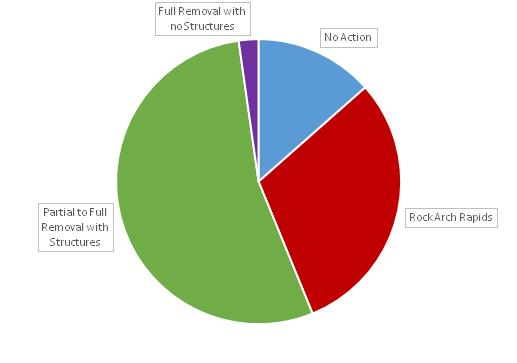 Participants’ first choice among four alternatives are represented in this chart. Nearly all participants prefer removal of the dam. The majority would replace it with some form of structure, either a rock arch rapids at the site of the existing dam or a series of smaller riffles between the site of the existing dam and the Pine Ridge Park Campground. Flooding reduction at Pine Ridge Park Campground was also strongly supported. When asked to choose between maintaining the current pool elevation and flooding reduction, only 10% of participants prioritize maintaining the current pool elevation over reducing flooding. The majority of participants (77%) chose flooding reduction for the Pine Ridge Campground over maintaining the current pool elevation. Prepared by Paul Speed, P.E. LT Leon Associates prepared a hydraulic model of the Iowa River using the United States Army Corps of Engineers hydraulic modeling program, HEC-RAS. The model includes the Steamboat Rock dam, downstream bridges, and land and bathymetric (underwater) survey data near the dam. The model was analyzed for multiple rainfall scenarios including high probability rainfall events (2-Year and 5-Year rainfall events) and low probability rainfall events (100-Year rainfall event). The existing conditions scenario was evaluated along with multiple scenarios that lowered the height of the existing dam incrementally including a full removal scenario. Refer to the graphic below for approximate flood elevations within the Pine Ridge Park campground. Key observations from the hydraulic analysis include:
Prepared by Maria L. Schmid, Architectural Historian The dam at Steamboat Rock is an important part of the community’s history. In 1855, shortly after the town of Steamboat Rock was established, a sawmill was built on the Iowa River by Isaac Lesh, Charles Boyle, and Samuel G. Higginbotham. The sawmill produced the lumber for the businesses and homes in Steamboat Rock. In 1857, S. F. Lathorp acquired the sawmill and dam and constructed a three-story gristmill at the location. The mill had the processing capacity for 125 barrels of flour a day.
The original dam was built of wood planks with rock rubble placed beneath as a structural stabilizer. The mill and the dam went through changes and repairs over the years as grain production increased. A mill house was located west of the gristmill. A fire at the mill in November of 1910 destroyed the building and, after fifty-three years of continuous operation, the mill was closed. The original wood dam deteriorated from age and was washed away by the river. For a brief time around 1912, a plan was developed to generate electricity at the old mill’s location and a powerhouse was constructed over the mill’s stone foundation. However, the idea never took off, and the hydroelectric plant was not completed. The old dam again fell into disrepair. Following the Great Depression, federal work relief projects under the Works Progress Administration (WPA) aimed to alleviate unemployment and provide economic relief. Many dams were built on Iowa Rivers during the 1930s, in addition to parks, roads, and other infrastructure. The WPA contributed $7,800 towards completion of a new concrete dam at the location of the old structure at Steamboat Rock, and the town of Steamboat Rock provided $3,200. Fifty men worked on the project for approximately three months under the supervision of Ernest Welden of Welden Brothers, an Iowa Falls company. Fifteen men from the Civilian Conservation Corps camp in Eldora also helped to build the dam. The current dam at Steamboat Rock dates to 1941, though features remain from the 1912 powerhouse construction and the earlier 19th century mill, for example, the concrete foundation on the river’s west bank and the old gristmill’s stone foundation underneath. An earthen dike on the east bank is likely a remnant from the original structure. A shelter cabin was added in 1948 above the powerhouse foundation and the west abutment was reconstructed in 1967. The Steamboat Rock Dam site is a back-drop for development in different eras. The dam has left a mark as a testament to human use and management of the Iowa River in the town of Steamboat Rock. Prepared by Mimi Wagner and Paul Speed On Tuesday evening, November 19th, a public meeting was held at the Iowa River Conservation and Improvement Club (Boat Club). Several professionals presented on various topics including, social input gathered to date, the history of the dam, the effects of the dam on fish and mussels, and the results of flood modeling work. LT Leon Associates then presented four alternatives for the Steamboat Rock Dam. You can view the presentation here.
Meeting attendees were invited to complete a survey to be turned in to the Iowa DNR. Paper copies of the survey, as well as the poster boards displaying the four alternatives, are available at the Steamboat Rock Library. The community and anyone interested in the project are invited to complete the survey. Surveys will be collected at the Steamboat Rock Library until December 3rd, 2019. Steamboat Rock Dam Mitigation Public Meeting #2 PowerPoint
Prepared by Mimi Wagner, Landscape Architect The “people” part of this engineering project is important to Iowa DNR River Programs and LT Leon Associates. A multi-step social science assessment is underway to better align local conditions with intended outcomes of the project. The first step in this social assessment was to learn everything we could about how people use the river & dam area near Steamboat Rock. Mimi Wagner, a landscape architect and environmental scientist working with LT Leon Associates, conducted interviews and small group meetings in July and August 2019. Mimi communicated with stakeholder groups and many individual residents in the area to form an understanding of use patterns and ideas for improving conditions for recreation related to the river. Results of Mimi’s research identified important recreation patterns that have been established since the current dam was constructed in the 1940’s. The below chart organizes the major themes that were identified. Here are a few main takeaways:
Read future blog posts to learn how these conditions were used to structure public listening at the August and November 2019 public open houses. Prepared by Kurt Meek, Iowa DNR Fisheries Management on 10/17/2019 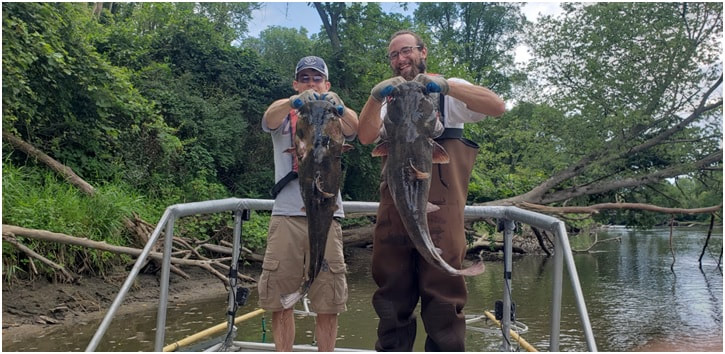 In July 2019 the Iowa DNR Clear Lake Fisheries Management crew electrofished two sites on the Iowa River near the Steamboat Rock Dam. The results of the electrofishing are reported below. For Site 2 (below Steamboat Rock Dam) the DNR prepared length-frequency graphs of game fish sampledd. For Site 1 (above Steamboat Rock Dam) not enough game fish were sampled to compile graphs. Electrofishing Results
Prepared by – Jennifer Kurth, Aquatic Biologist – Watershed Monitoring Coordinator, Iowa DNR 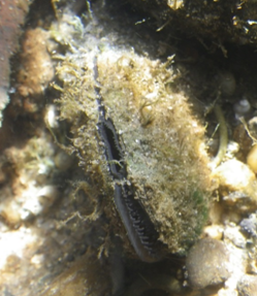 Mussel covered in algae Mussel covered in algae Freshwater mussels may not be as well-known as the fish species we have in Iowa, but they are an important part of a healthy river, stream, or lake. Mussels are filter-feeders. This means they eat by filtering algae, bacteria, and other organic material out of the water, like a living water-filtration system. What they can’t eat gets bound up in mucus and deposited on the bottom where it can be eaten by other animals. Depending on size, an adult mussel can filter 12 to 36 gallons of water per day! However, this filtering activity makes them vulnerable. Mussels are sensitive to a wide array of pollutants, and are among the most sensitive groups of organisms tested for ammonia pollution. Therefore, mussels are good indicators of water quality and the health of the waterbodies in which they live. In addition to helping to clean the water, mussel beds have been shown to stabilize the river bottom against the scouring effects of flowing water. Mussels also provide habitat for other aquatic organisms. It is not unusual to find mussels with algae growing on their shells (Figure 1) or insect larvae attached to the shells. Snails will actually graze on the algae growing on mussels, like cows in a pasture. Additionally, empty shells are often used by fish and crayfish as egg laying sites or hiding places Mussels are also an important source of food for wildlife and fish species, such as muskrats, raccoons, otters, and the freshwater drum and lake sturgeon. Both muskrats and raccoons leave discarded piles of shells (middens) on the shore, which can provide information about the mussel species found in the area. While freshwater mussels were used as food by Native Americans in the past, eating them is not recommended now, both because of their precarious status in Iowa, and because, as filter feeders they accumulate any pollutants that may be present in our waters. Recent surveys have found 12 species of mussel living in the part of the Iowa River around the Steamboat Rock Dam, including 2 species listed as threatened by the state of Iowa, indicating that there is good habitat and that the river is a healthy place for mussels. Species found near Steamboat Rock Dam:
|
Proudly powered by Weebly
